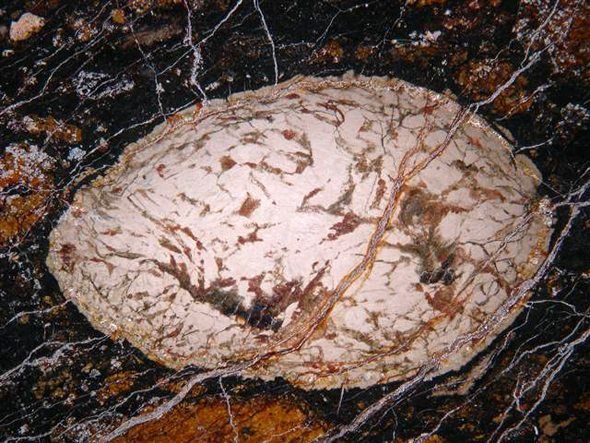Kingsborough's ‘Rock’ Stars Discover New Mineral

The next time you hear someone coolly drop the old maxim, “Those who can’t do, teach,” remind them of Kingsborough Community College Physical Sciences Professor Dr. Harold C. Connolly, Jr. and his research partner, CUNY undergraduate intern Stuart A. Sweeney Smith.
The two ‘rock’ stars from Southern Brooklyn’s world of academia by the sea were part of the prestigious group of scientists who discovered the new mineral “Krotite,” described as “one of the earliest minerals formed in our solar system,” as revealed in a paper titled “Krotite, CaAl204, a new refractory mineral from the NWA 1934 meteorite,” which appeared in the May-June issue of the “American Mineralogist.”
Found inside of a 4.5-billion-year-old meteorite, and heretofore never found in nature (because who would even think to look there?!), the discovery — as detailed in the article authored by Chi Ma (Caltech), Harold C. Connolly Jr. (KCC/CUNY), Anthony R. Kampf (NHM), John R. Beckett (Caltech), George R. Rossman (Caltech), Stuart A. Sweeney Smith (who was a NSF funded Research for Undergraduate [REU] student at CUNY/AMNH) and Devin L. Scharder (University of Arizona) — is particularly remarkable, since heaven knows what untold light this newfound knowledge will shed on uncovering the vast, awesome mysteries of the galaxy.
Even though I am not a science person and can barely distinguish the difference between a mineral and an element, I cannot help but feel in awe over this discovery. It is so awesome, in fact, that I am willing to overlook the resemblance of the meteorite — whose official name is “NWA 1934 CV3 carbonaceous chondrite” — to a petrified cow turd.
A temperature of 2,732 degrees Fahrenheit is required in order for Krotite to form, according to MSNBC, which lends credence to scientists’ theory that Krotite “was created as the solar nebula condensed and the planets, including Earth, were formed.”
“The new Krotite mineral, found in a 4.5 billion-year-old meteorite, is a phenomenal discovery and is one of our connections to the beginning of the solar system. The Kingsborough community congratulates Professor Connolly, who led the discovery, and the outstanding team of scientists working with him. It is a testament to the quality of the faculty that teaches at Kingsborough, the engagement of the faculty with their students, both in and out of the classroom, and the quality of their research. We are so very proud,” said Dr. Regina Peruggi, president of Kingsborough Community College.
Krotite is named after University of Hawaii Cosmochemist Alexander N. Krot, commemorating his contributions to a deeper understanding of early solar system processes.




